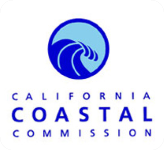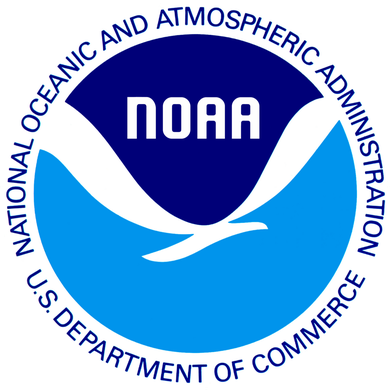Agency or authority
What this permitting pathway covers
A faster, no-cost alternative to obtaining a Coastal Development Permit (CDP) or individual project Consistency Determination (CD) from the California Coastal Commission for restoration projects in the Coastal Zone. This pathway works in conjunction with NOAA Restoration Center (NOAA RC) Programmatic Biological Opinions for Restoration.
Eligibility
Projects that are submitted for NOAA Restoration Center (RC) funding or technical assistance, or a Corps permit (which creates a “federal nexus” for NMFS Section 7 consultation), will be provided to the RC’s Community-based Restoration Program (CRP or Program) using a standard application form available through the NOAA RC. The NOAA RC will evaluate which projects are consistent with Program requirements and determine which NMFS consultation applies (the North Coast NMFS Biological Opinion or Central Coast NMFS Biological Opinion, another existing restoration BO that is applicable for the CRP, or a new, individual Section 7 consultation).
Maps of the Coastal Zone Boundary
Applicable locations
This Consistency Determination applies to the NOAA RC’s Community-Based Restoration Program in California, from the Oregon Border through San Luis Obispo County, including tidally influenced coastal estuarine areas. This Consistency Determination excludes San Francisco Bay.
Permit documents
- NOAA Fisheries Restoration Center Federal Consistency Determination
- Consistency Determination Application Form
Expires on
December 16, 2032
How to apply
To discuss your project, contact Joe Pecharich, Marine Habitat Resource Specialist (Santa Rosa, CA) at joe.pecharich@noaa.gov
May be used with:
- North Coast NMFS Programmatic Biological Opinion (PBO)
- Central Coast NMFS Programmatic Biological Opinion (PBO)
- CDFW Fisheries Restoration Grant Program (FRGP)
Example projects
Activities covered
Most NOAA RC projects included in the program are salmonid habitat restoration projects such as riparian revegetation, large woody debris placement, fish passage barrier removal, invasive species removal, and off channel habitat creation. The NOAA RC also conducts a variety of estuarine habitat restoration projects designed to restore and enhance seagrass beds, mudflats, salt marsh, brackish marsh and other tidally influenced habitats. Off shore coastal habitats like kelp forests are also restored.
The full description of qualifying project types, supplemental protection measures, and project restrictions start on page 17 of the Consistency Determination, where there are detailed restoration project types included in the proposed Restoration Program. Each project type has a brief summary of the project purpose, a description of different activities and/or sub-project types, and a summary of typical construction, maintenance, and monitoring activities associated with the project type.
Although the Program does not cover projects whose primary purpose is creation or modification of non-restoration oriented infrastructure (e.g., dams and levees), some restoration projects may require creation, modification, or relocation of infrastructure so that travel, recreation, water supply or other types of infrastructure and operations can continue in the context of the restored habitat (e.g., relocation of a bridge or water control structure to allow for habitat restoration).
- Improvements to stream crossings and fish passage
- Fish screens
- Removal of small dams, tide gates, and legacy structures
- Riparian restoration and protection
- Restoration and enhancement of off-channel and side-channel habitat
- Floodplain restoration
- Establishment, restoration, and enhancement of tidal, subtidal, and freshwater wetlands
- Water conservation projects for enhancement of fish and wildlife habitat
- Removal or remediation of pilings and other in-water structures
- Instream habitat restoration
- Upslope watershed restoration
- Kelp forest restoration
Additional engineering and fish passage specialist review will be required for projects including, but not limited to:
- culvert retrofit and replacement
- removal of flashboard dam abutments and sills
- installation of fish screens
- and placement of weirs in concrete lined channels.
Project or program specific BOs will include applicable requirements.
Exclusions
All projects included under the Program must involve on-the-ground habitat restoration resulting in physical habitat modifications and beneficial ecological impacts for federal trust species. The following projects will be excluded from this action due to their scope, complexity, or potentially controversial nature and individual project review from the Coastal Commission or the approved Local Coastal Program will be sought:
- Projects the NOAA RC determines to be inconsistent with NOAA RC goals or standards, the CDFW Manual, or other applicable restoration practices and guidelines.
- Projects determined to be inconsistent with Section 7 of the Endangered Species Act.
- Projects the Executive Director of the Coastal Commission determines to be potentially inconsistent with the California Coastal Management Program or that otherwise warrant individual review.
Application Tips and Resources
To seek coverage under this consistency determination, applicants must submit an application and project information directly to the appropriate NOAA Restoration Staff, as listed on the right under How to apply, instead of through a Corps application. The NOAA RC will evaluate which projects are consistent with the Program requirements and determine which NMFS consultation applies (the North Coast NMFS Biological Opinion, the Central Coast NMFS Biological Opinion, another existing restoration BO that is applicable for the Community-based Restoration Program, or a new, individual Section 7 consultation).
The NOAA RC team will use a pre-established checklist to help determine if a proposed project is consistent with the parameters of the Program. Once projects have received initial project screening by NOAA RC, projects that do not fit Program requirements must be modified or further clarified and developed by the project proponent before they can be resubmitted for further consideration. For projects within the Coastal Zone, NOAA RC will also evaluate the project’s eligibility for coverage under this Federal Consistency Determination.
The following list includes typical information that must be provided by Program applicants (with assistance from qualified biologists and other technical specialists) in order to fulfill CRP application requirements:
- Pre-project photo monitoring data (per CDFW’s guidelines)
- Project problem statement, goals, objectives
- Watershed context
- Description of the type of project proposed and restoration techniques to be utilized (culvert replacement, instream habitat improvements, etc.)
- Project dimensions and engineering plans
- Description of construction activities (types of equipment, timing, staging areas or access roads required)
- If dewatering of the work site will be necessary, a description of temporary dewatering plan and methods, an aquatic species relocation plan, and identification of a qualified individual (verified by resumes or description of qualifications) who will be onsite to transport protected salmonids and be responsible for reporting on this information.
- Construction start- and end-dates
- Estimated number of creek crossings and type of vehicle
- Materials to be used
- If vegetation will be affected as a result of the project (including worksite access), provide a visual assessment of dominant native shrubs and trees, approximate species diversity, and approximate acreage of the vegetation to be removed and replaced.
- Description of existing site conditions and explanation of how proposed activities would improve or maintain these conditions for steelhead or coho salmon
- Description of applicable minimization and avoidance measures incorporated into the project.
- For projects which may result in incidental take of listed salmonids (or other listed species), specify the funding for implementation of all proposed and required environmental protection measures
- A signed “checklist” of project conditions, verifying agreement by the project applicant
See page 55 of the CD for information about Post Construction Monitoring and Reporting Requirements.


